Economy

Global Steel Production Expands in October
Written by David Schollaert
December 1, 2021
World crude steel production grew slightly in October after contracting for the four prior months. Steelmakers around the world produced an estimated 145.7 million metric tons of crude steel in October, up 0.9% or 1.3 million tons from the prior month, according to World Steel Association (worldsteel) data.
Since repeated months of record-breaking output from March through May, steel production had been trending down, accentuated by aggressive production cuts in China. October’s growth marked the first month of expansion since May. The expansion is notable, especially given a 3.0% contraction in China, where production was down 2.2 million tons in October.
Despite the increase, October’s total was the second lowest all year and the third-lowest monthly output in nearly two years. At 145.7 million metric tons, it nearly rivaled the low mark of 136.9 million tons seen in April 2020 when the globe was struggling with the first COVID-19 surge.
Year-to-date, world crude steel production totaled 1.603 billion metric tons, up by 5.8% compared with the same period in 2020. Production was also up 3.9% when compared to the same pre-pandemic period in 2019.
The U.S. remained the fourth-largest crude steel producer in the world in October, accounting for 7.5 million metric tons or 5.2% of the global total. U.S. production in October was up 2.7% from the prior month or 200,000 metric tons. Compared with the same month last year when the economy was struggling with COVID disruptions, October’s production was an improvement of 20.5%, and up 3.5% compared to the pre-pandemic period in 2019.
U.S. production through the first 10 months of 2021 totaled 71.3 million metric tons, 18.7% higher than the same period one year ago but still 2.8% or 2.082 million metric tons behind pre-pandemic levels from 2019.
China produced nearly half of the world’s steel, edging below the halfway mark for the first time since March 2018. At 49.1% or an estimated 71.6 million metric tons in October, Chinese production was down 3.0% month on month, and down 22.3% when compared with October 2020.
Shown below in Figure 1 is the annualized monthly global steel production on a three-month moving average (3MMA) basis and capacity utilization since January 2000 based on data from worldsteel, while Figure 2 shows the year-over-year growth rate of global production on the same 3MMA basis since January 2013. Mill capacity utilization in October on a 3MMA basis was 72.8%, down 2.6 percentage points from the month prior. On a tons-per-day basis, production in October was 4.7 million metric tons, down for the fifth straight month following May’s record rate of 5.813 million metric tons, and the lowest daily output since April 2020. Growth on a three-month moving average through October on a year-over-year basis was -6.8%, a collapse from the 18.4% expansion seen in May.
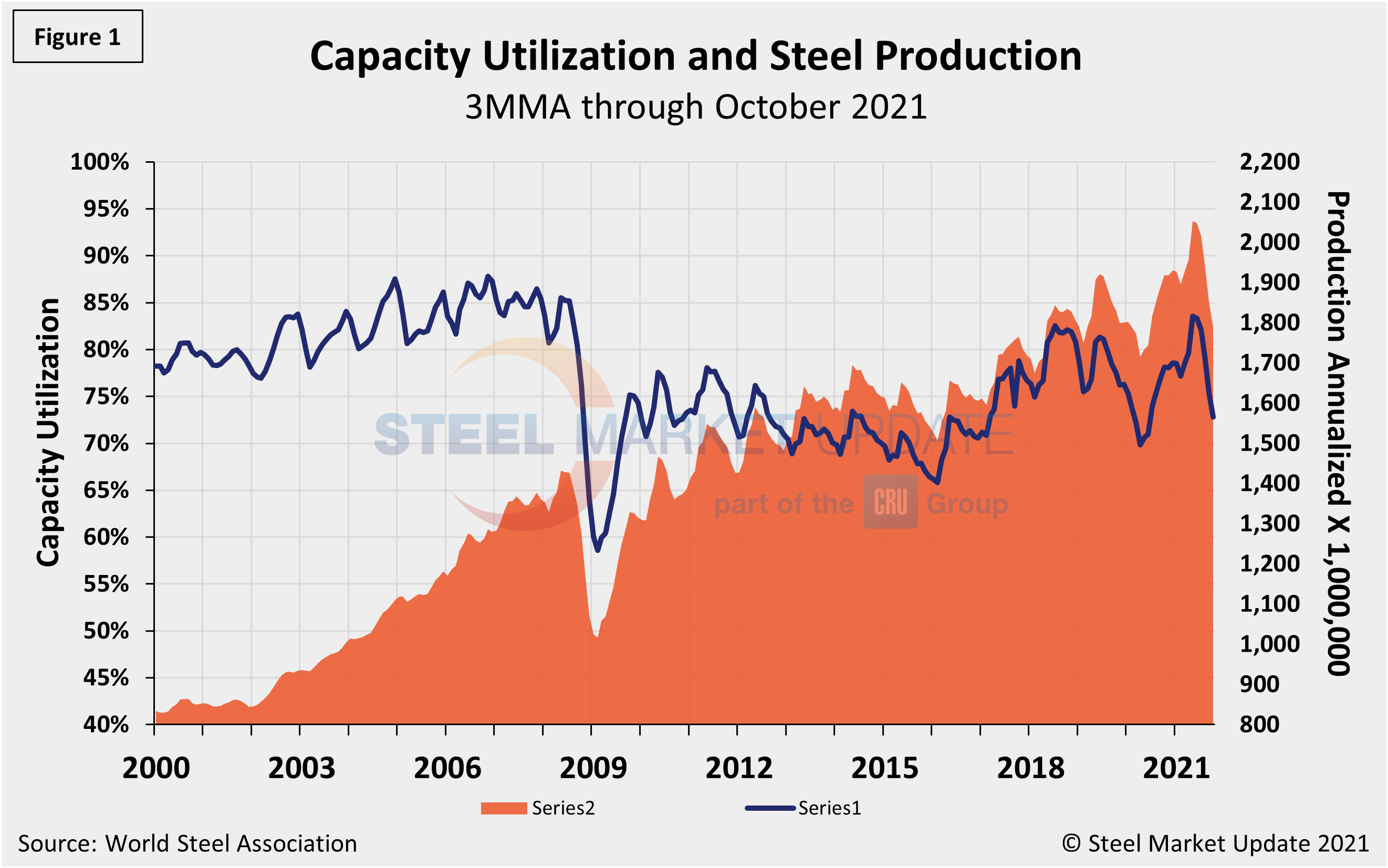
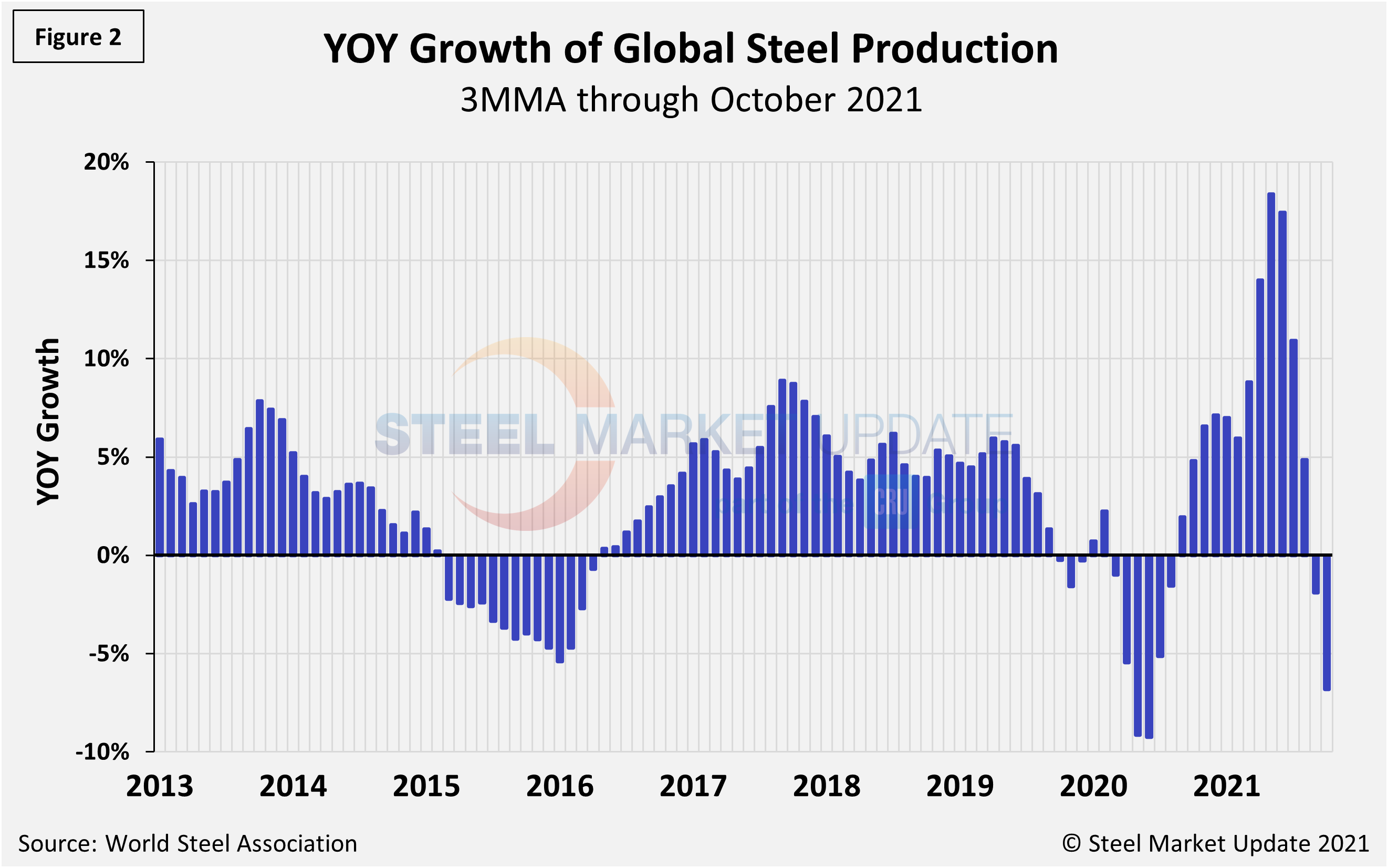
Displayed in the table below is global production broken down into regions, the production of the top 10 nations in the single month of October, and their share of the global total. It also shows the latest three months and 12 months of production through October with year-over-year growth rates for each period. Regions are shown in black font and individual nations in gray. World steel production overall fell 6.0% in three months, a significant deceleration from the 17.9% growth just four months prior. Over 12 months through October, though, growth was 6.3%, up 1.4 percentage points from the same period in September. But the market has not maintained positive momentum, as the three-month growth rate has been lower than the 12-month growth rate for three straight months.
The table shows that North American production was up 20.1% in the three months through October, and up 13.3% year on year. The positive momentum in the North American market is significant as the economy continues to battle the pandemic. More importantly, when compared to the same pre-pandemic period in 2019, present output is up 2.4%.
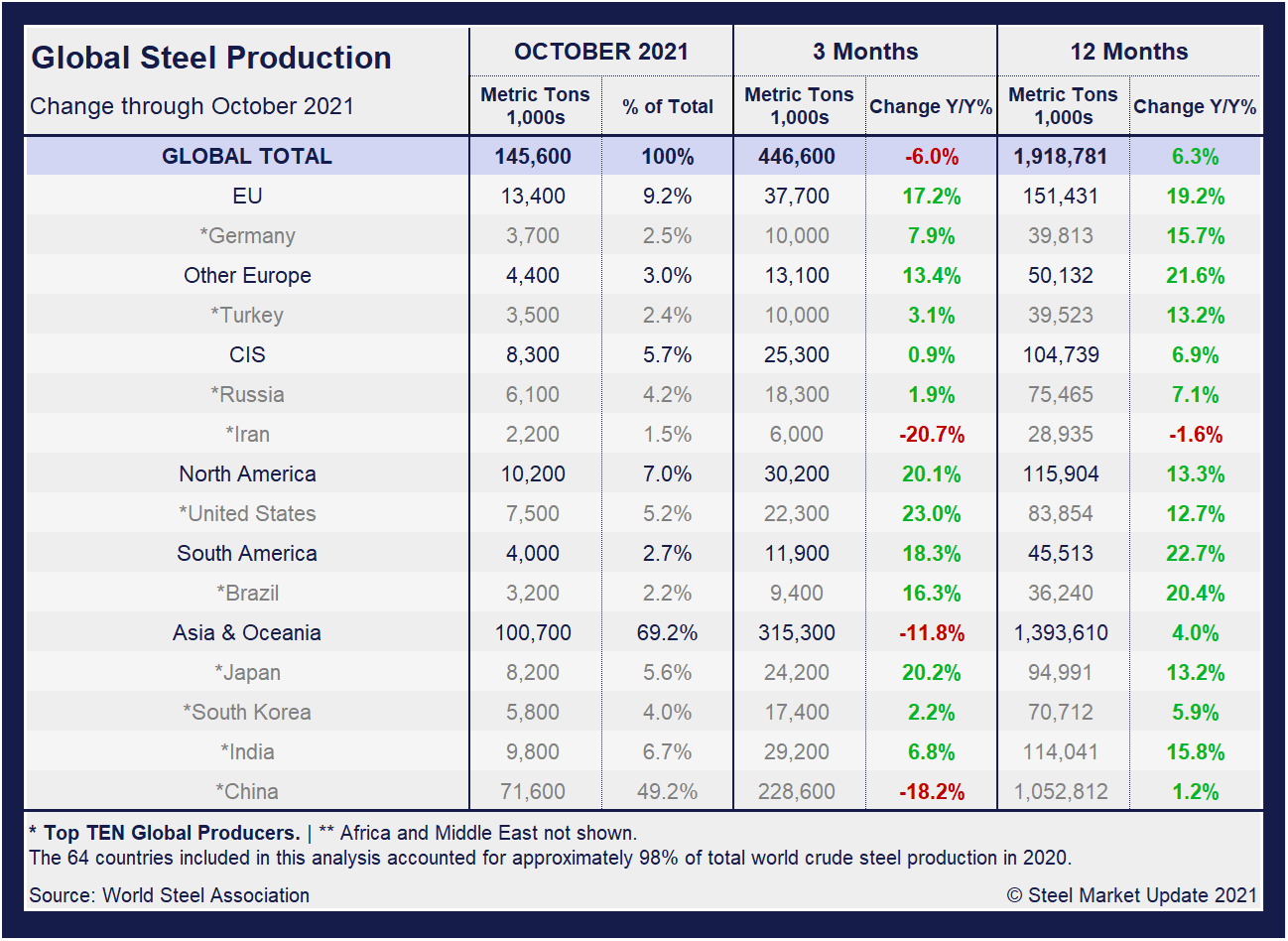
China’s Crude Steel Production
China’s monthly steel production was estimated at 71.6 million metric tons in October, down from 73.8 million metric tons the month prior. The 2.2-million-ton month-on-month decrease marks the fifth consecutive decline following repeated record-breaking months of crude steel output, reaching an all-time high of 99.5 million metric tons in May.
On a 3MMA basis (Figure 3), the annual rate of China’s crude steel production had maxed out at 1.123 billion metric tons in September 2020, then dipped month on month through February. March through May were the first increases since last September, setting a new high of 1.166 billon metric tons in May. October’s total fell to 914.4 million metric tons, falling again for the fifth time in as many months. China’s annual capacity is presently 1.128 billion metric tons, and its annual capacity utilization slipped to 93.3% in October, down from its all-time high of 98.4% in June.
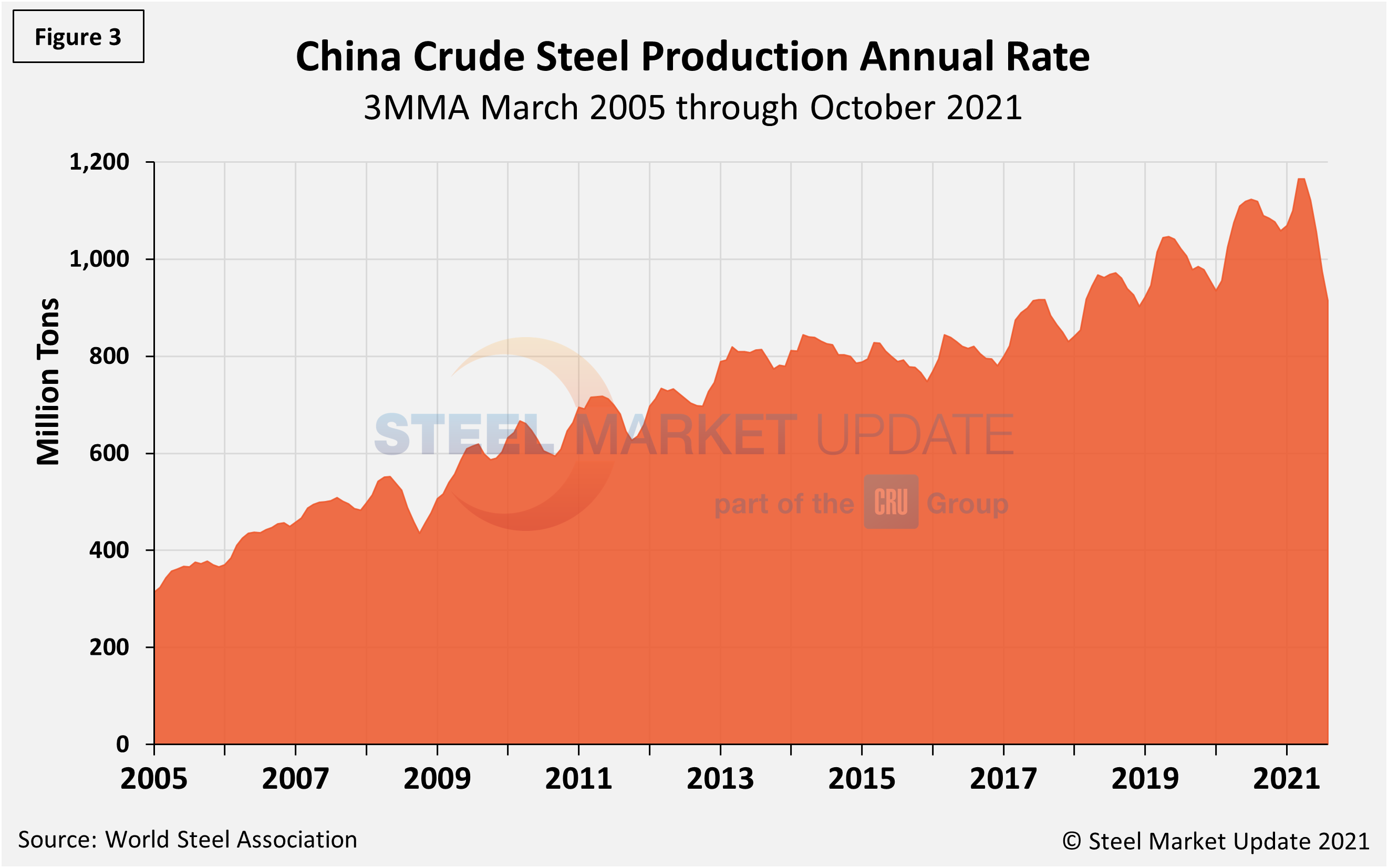
The fluctuations in China’s steel production since April 2013 are shown in Figure 4, while Figure 5 shows the growth of global steel excluding China, both on a 3MMA basis. From November 2020 through October 2021, the rest of the world’s production rose sharply, reaching a peak of 38.0% in April. Since then, the rate for the rest of the world’s annual production has decreased sequentially to just 4.2% in October. China’s annual growth rate was -18.2% in October, a decrease from -13.2% in September, and a complete turn from a high of +15.1% in April. The sharp downturn in steel production continues to be driven by Chinese cutbacks. The reductions are attributable to power shortages resulting from high coal prices and the Chinese government’s efforts to curb harmful air emissions from the steel industry. The trend should continue for the foreseeable future.
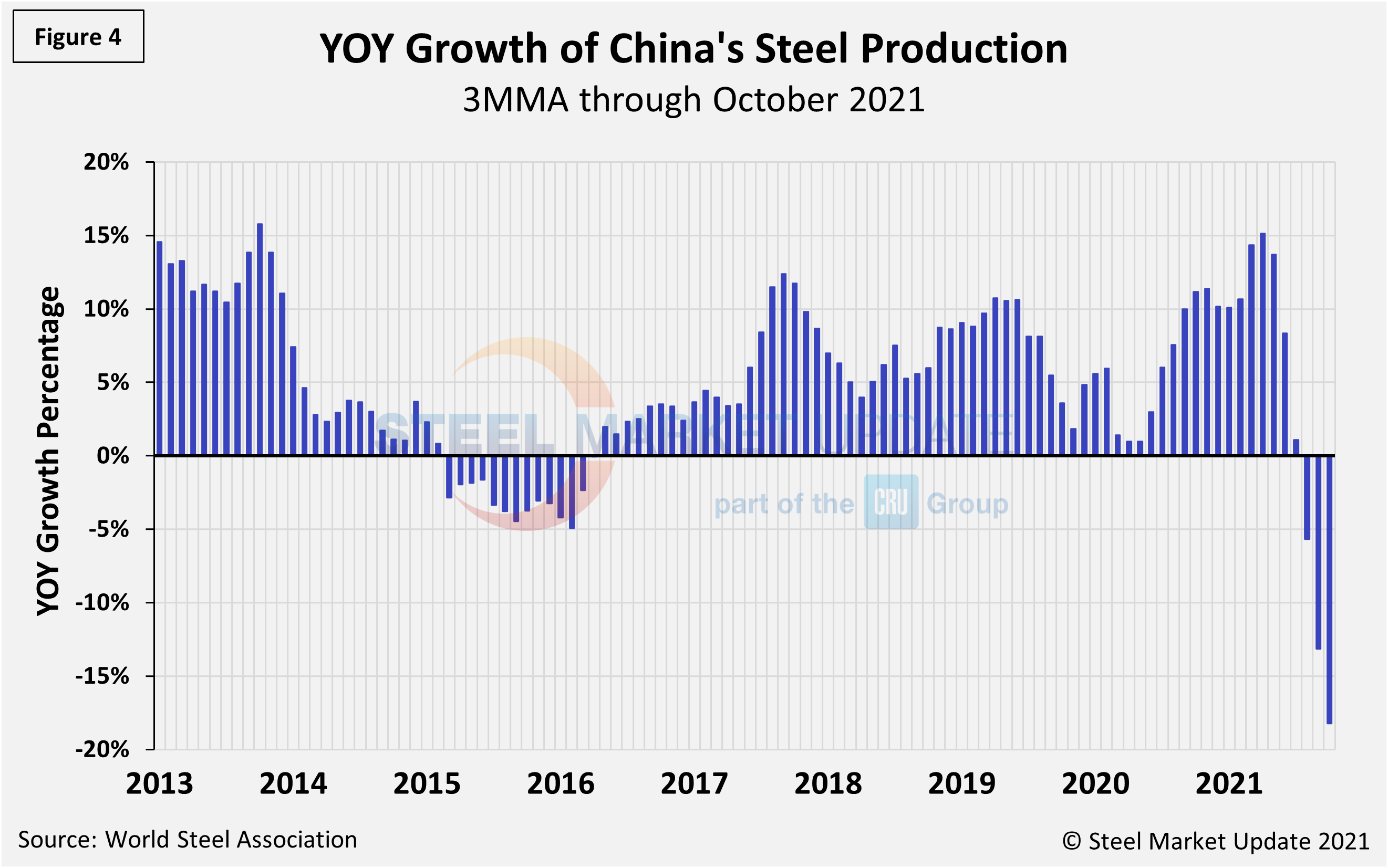
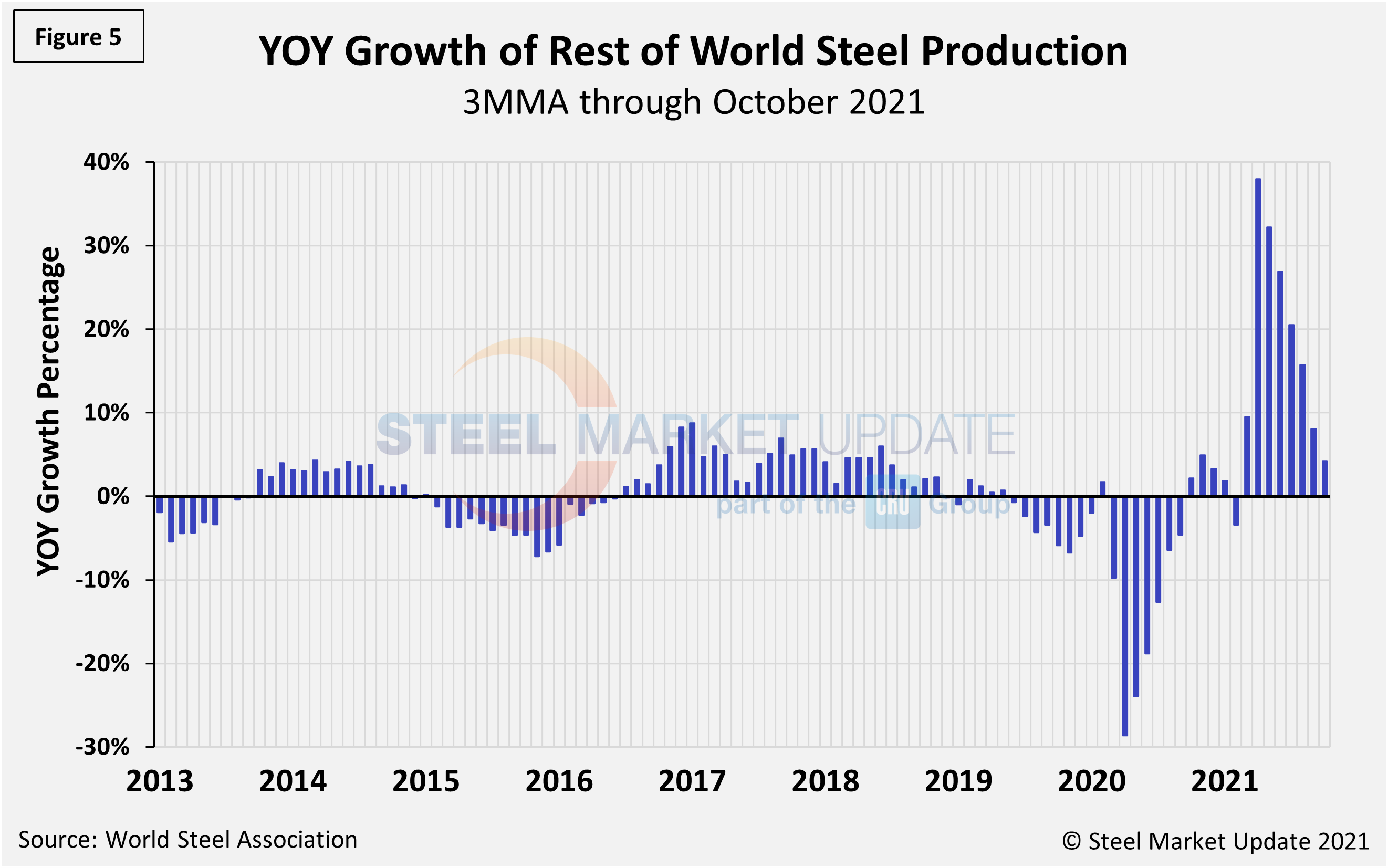
By David Schollaert, David@SteelMarketUpdate.com

David Schollaert
Read more from David SchollaertLatest in Economy

ISM: Manufacturing expansion loses steam after two months of growth
US manufacturing activity slowed in March after two straight months of expansion, according to supply executives contributing to the Institute for Supply Management (ISM)’s latest report.

Chicago Business Barometer rose to 16-month high in March
The Chicago Business Barometer increased for the third-consecutive month in March. Despite this, it still reflects contracting business conditions, as it has since December 2023.

Durable goods orders rise again in February
Transportation equipment led the increase, rising 1.5% to $98.3 billion.

Consumer confidence falls for fourth consecutive month
People remain concerned about inflation, trade policies, and tariffs.

Housing starts ticked up in February
Single-family starts last month hit a rate of 1.10 million, a month-over-month increase of 11.4%, census data shows.
